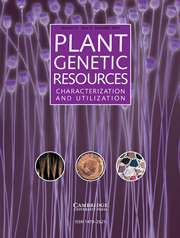No CrossRef data available.
Article contents
Momordica charantia L. var. muricata Willd is a donor for higher fruit number and yield in bitter gourd breeding
Published online by Cambridge University Press: 27 September 2023
Abstract
The potential of Momordica charantia var. muricata, a little-known wild form, as a source of favourable alleles in breeding and improvement of bitter melons (M. charantia var. charantia), is demonstrated. The M. charantia var. charantia cultivar Priyanka and M. charantia var. muricata accession IC634896 were crossed with each other and cross ability and performance of F1 plants were studied. These botanical varieties were fully cross-compatible on either direction. Surprisingly, cross of Priyanka × IC634896 produced 80.0 fruits compared to 17.0 in Priyanka and fruit yield per plant (2287.4 g) was more than double that in Priyanka (1042.3 g). This hybrid has to be back crossed with commercial cultivar to improve its fruit size, with no compromise on fruit number. This is the first study showing the promise of M. charantia var. muricata as a potential donor in bitter melon breeding.
- Type
- Short Communication
- Information
- Copyright
- Copyright © Kerala Agricultural University, India, 2023. Published by Cambridge University Press on behalf of National Institute of Agricultural Botany


